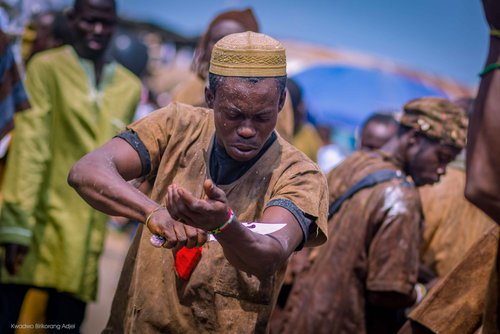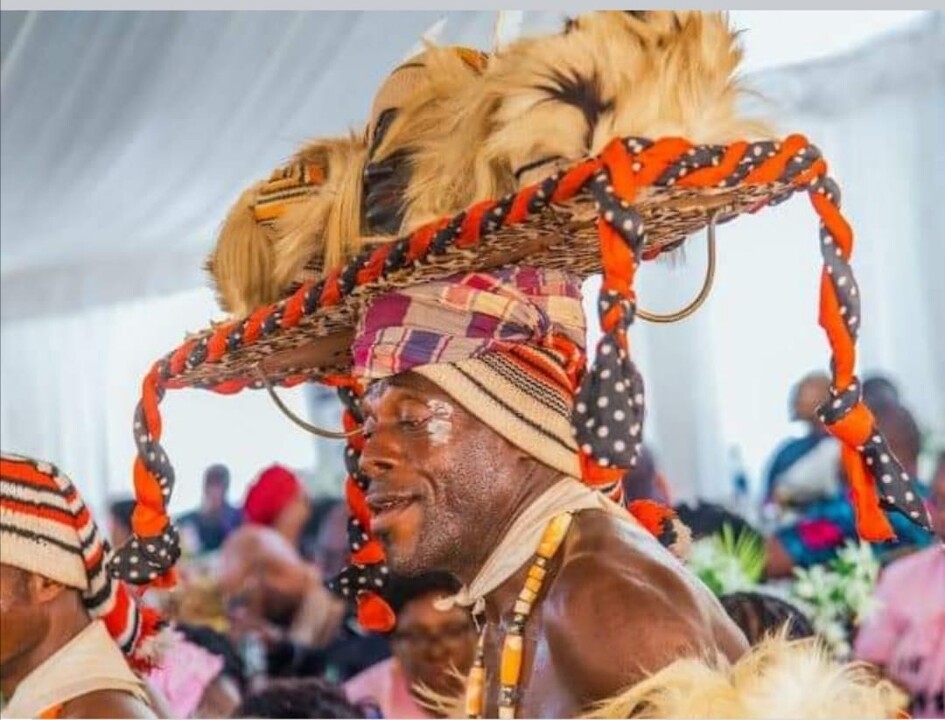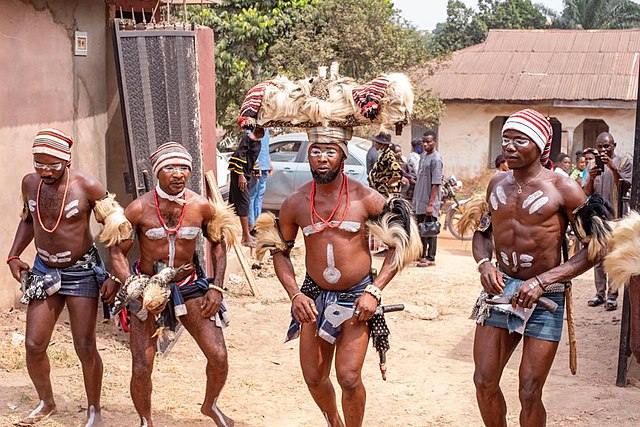By: Kekeli K. Blamey
Deep within the mountainous regions of Volta Region, lies a rich cultural heritage. The Akpini people, an Ewe subgroup, have preserved their traditions through the captivating Akpini War Dance.
This ancient performance, imbued with historical and symbolic significance, continues to play a vital role in the community’s traditional literacy.
The Akpini War Dance originated as a pre-battle ritual, performed to invoke ancestral spirits for protection and guidance, intimidate enemies, and boost warriors’ morale.
Today, this mesmerizing dance serves as a window into the Akpini people’s cultural values, historical narratives, and spiritual connection.

“The Akpini War Dance is more than just a performance,” explains a community elder. “It’s a way of passing down our history, traditions, and values to the younger generation.”
The dance itself is a masterful display of choreography and symbolism. Performers adorn themselves in traditional regalia, complete with animal hides, feathers, and beads.
Facial markings symbolize strength and bravery, while rattles and drums communicate with ancestors. The intricate footwork and acrobatic movements evoke the warriors’ agility and prowess.
Beyond its aesthetic appeal, the Akpini War Dance serves as a vital component of traditional literacy. It conveys cultural values such as courage, loyalty, and resilience, while recounting historical narratives of battles, migrations, and ancestral legacy.
The dance also fosters social cohesion, uniting community members in a shared cultural experience.
“To understand the Akpini War Dance is to understand our identity,” says a young community member. “It reminds us of where we come from and who we are.”
Efforts are underway to safeguard this cultural treasure. Community-led initiatives document and teach the dance, while cultural festivals showcase the performance.
Collaborations with schools integrate traditional literacy into education, ensuring the continued transmission of cultural values and identity.

However, challenges persist. Urbanization and cultural erosion threaten the dance’s survival, while limited documentation and archiving hinder preservation efforts. Globalization’s influence on traditional practices also poses a significant risk.
“The Akpini War Dance is a fragile thread connecting us to our past,” warns a cultural expert. “If we don’t preserve it, we risk losing a vital part of our cultural heritage.”
As the Akpini people strive to preserve their cultural legacy, the War Dance remains a powerful symbol of their resilience and tradition. This ancient performance continues to captivate audiences, inspiring a new generation to cherish their cultural roots.
In a world where cultural identity is increasingly important, the Akpini War Dance is a testament to traditional literacy’s enduring power.





